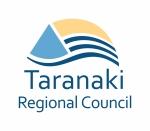Seismologists Find Nothing To Fear
The Taranaki Regional Council today (21 February) received a geological assessment of hydraulic fracturing (“fracking”) in Taranaki which concludes that the practice has had no detectable effect on earthquake or volcanic activity in the region, and is unlikely ever to do so.
The assessment, by seismologists at GNS Science, arrived at a similar conclusion for the practice of deep-well reinjection, where unwanted material from wells is reinserted into the earth.
In a report commissioned by the Council, GNS Science seismologists say:
- There is no evidence that hydraulic fracturing activities in Taranaki have had any observable effect on natural earthquake activity.
- It is unlikely that hydraulic fracturing would induce any earthquakes in the Taranaki region that would have a significant effect.
- There is no evidence that long-term deepwell injection activities in Taranaki have had any observable effect on natural earthquake activity.
- There is no evidence that hydraulic fracturing or deepwell injection activities in Taranaki would have any observable effect on volcanic activity.
The conclusions are based on a study of 3,300 recorded earthquakes between 2000 and late 2011, looking particularly for those that occurred within 10 km of any fracking location and within three months of fracking occurring at the location.
Out of the 3,300 earthquakes, only one fitted these broad criteria. But GNS seismologists say there is only a “slim” chance that fracking was the cause even in this case, because there had also been ongoing seismic activity in the same place in the years before the fracking occurred, and an earthquake had also occurred there just a couple of months before the fracking.
The Taranaki Regional Council’s Director-Resource Management, Gary Bedford, says GNS Science has an extensive, state-of-the-art seismic monitoring network in Taranaki, able to detect and record earthquakes of Magnitude 2 (M2) or greater. A shallow M2 earthquake has an effect similar to that of a passing truck.
Earthquakes have to be of M4 to M5 to cause any widespread damage. “This requires a release of energy 1,000 times or more than any hydraulic fracturing occurrence,” says Mr Bedford. “An analysis in the GNS report demonstrates that it is scientifically inconceivable that a damaging earthquake could be caused by hydraulic fracturing in Taranaki.”
He says the report acknowledges that M2.3 and M1.5 earthquakes in Blackpool, England, were probably related to fracking, but scientists agreed this was a worst-case scenario, and the earthquakes themselves would have been barely detectable by humans.
Much of the public discussion about overseas events confuses fracking with deep-well reinjection, which involves greater volumes of liquid (mainly saline water) but at much lower pressures. The GNS study concludes that in Taranaki, long-term deep-well reinjection has also had no effect on seismic activity.
The report also concludes that hydraulic fracturing and deep-well reinjection activities are too far away from Mt Taranaki to have any conceivable influence on volcanic activity.
Mr Bedford says the GNS report brings scientific objectivity and robustness to a debate where discussion often becomes emotional.
The latest report follows a hydrogeologic risk assessment of fracking undertaken by the Council last year. The assessment concluded that if managed and regulated according to good practice, fracking poses no credible risk to shallow groundwater aquifers in the region.
LINKS
GNS Science report
Council meeting agenda memo
